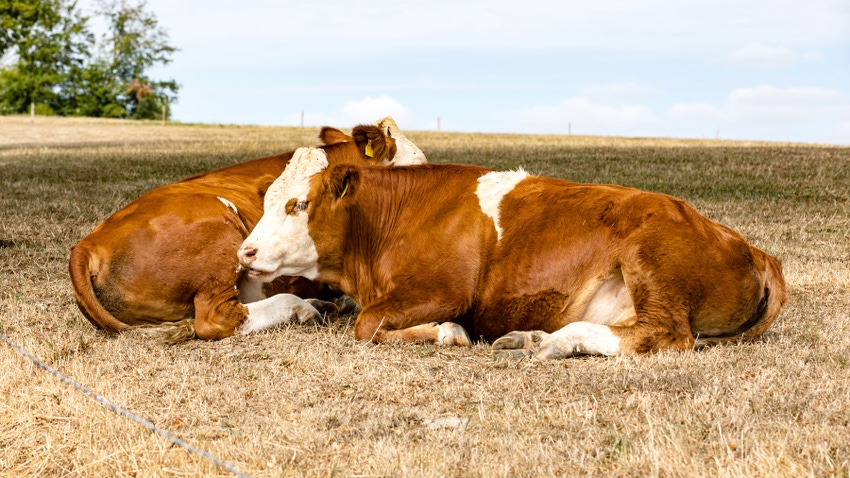June 26, 2023

by Wesley Tucker
Open any farm publication and you’ll find articles about how high the current calf market is, with expectations of it being even better next year, or how the drought is driving the cost of hay and feed through the roof.
Several years of drought is causing the perfect storm in the cattle market, just like 2014-15. Producers know those who can survive will likely see even better prices ahead, enticing them to hold onto every cow they can. However, the cost of getting there may eat up all potential profits to be earned in future years.
So how does a producer decide whether to hold on or begin liquidating a portion of the herd?
Make a management move
Traveling the country speaking at conferences, I love visiting with and learning from producers with different management philosophies. It seems to vary by region.
For instance, in the West, most ranchers know as goes the rain, so goes the forage. Therefore, they have predetermined trigger dates that if accumulated rainfall is below a certain level, then mandatory destocking strategies are begun.
It’s not a choice of do we or don’t we. If rainfall is below the minimum, strategy No. 1 is automatically implemented. If rainfall is even lower, below the second threshold, then strategy No. 2 is also employed.
These strategies may include early weaning, selling yearlings and replacement heifers, and culling old cows or those with a bad attitude. Eventually when things get bad enough, culling from the core herd is required. But conditions are evaluated at predetermined dates to trigger the level of management response required.
I grew up in the Midwest with much more favorable weather conditions, so trigger dates were a relatively new concept to me. Our region possesses the ability to grow so much forage in a given period that I sometimes think we are lulled into a false sense that we can manage around the weather and aren’t as dependent on it as our Western neighbors. Rather than destock, we’ll just plant an alternative forage, or buy something else to get us through.
Pricey practices
As I thought about my own operation and those I work with, I realized many of us have a preferred number of cows we believe our operation should sustain — whether it’s 25 or 500 cows, most of us have a number in mind.
When drought hits, rather than planned destocking triggers, we reach into our toolbox of drought strategies to grow or buy our way out of it.
We try to “grow” our way out by planting alternative forages such as summer and winter annuals, applying more fertilizer, baling cornstalks, CRP fields and highway right-of-ways.
We choose to “buy” our way out by trucking in hay from faraway places — using alternative feeds such as corn silage, cotton gin trash or wheat straw — or even replacing hay with corn and other byproducts.
Don’t get me wrong. There’s nothing inherently wrong with any of these strategies except that they are costly. We can only afford them when we are desperate. Otherwise, they are rarely cost-effective for our operation.
Make hard choices
On the Western range, ranchers know the only real option to extend forage and save the herd is to begin destocking early before it’s too late.
In the Midwest, I’m afraid that rather than listening to Mother Nature, our first instinct may be to reach for the toolbox to manipulate our environment. But after several years of being required to reach in the toolbox multiple times, I’m starting to think we may need to take a lesson from our Western neighbors.
Are we just trading dollars and giving away future returns in an effort to hold onto that “preferred” number of cows?
Be very careful when eyeing future cattle prices as they may entice us to pay whatever it takes to grow or buy our way out of one more year of drought.
Rather, consider some aggressive culling to lower our stocking rate and take a little pressure off our already stressed pastures. Profitability might just be the result after all.
Tucker is a University of Missouri Extension ag business specialist and succession planner. He can be reached at [email protected] or 417-326-4916.
Read more about:
DroughtYou May Also Like




